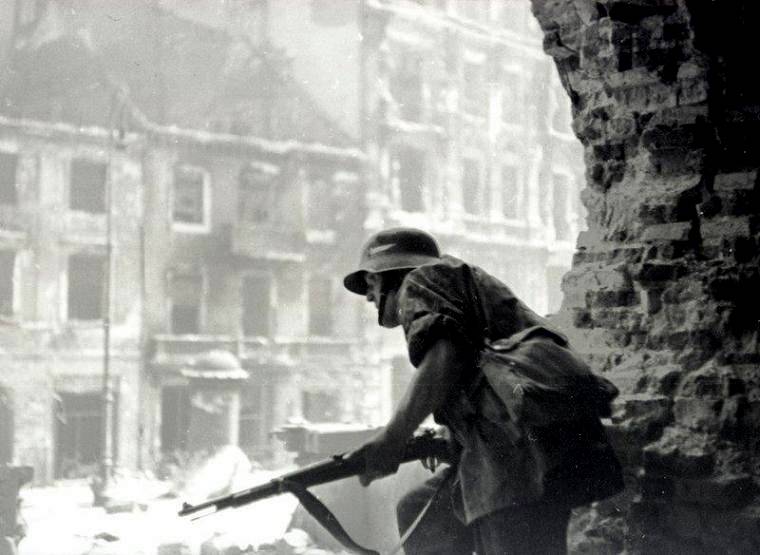On the 1st of August Poland will commemorate the 76th Anniversary of the Warsaw Uprising. It was one of the final chapters of the World War II and one of the largest acts of resistance both against Nazi and Soviet totalitarianisms. Alexandra Richie, a Canadian historian living in Warsaw, vividly depicted the Uprising’s fate in her book “Warsaw 1944: Hitler, Himmler, and the Warsaw Uprising”. In our interview she tells the Uprising’s story in a wider context and shares her reflections on its legacy.
Why did you choose the Warsaw Uprising as a topic of research? In what way is your standpoint different from those taken by Polish authors?
When I first visited Warsaw in the 1980s, I was struck by the sheer level of destruction which had been meted out to the city during the war. In those days there were still many people alive who had experienced the uprising both as combatants and as civilians and I began to talk to them about their experiences. Despite its enormous importance in the history of Poland in World War II, the Warsaw Uprising is very little known in the rest of the world. As I learned about the scale of these events, I wanted to try to explain this history to people who had never heard about it.
Unlike many Polish authors, I tried to put the uprising into the context of the entire war – in other words to show how it was influenced by external events such as the massive Soviet summer offensive Operation Bagration, the assassination attempt on Hitler on 20 July 1944 and Field Marshal Walter Model’s counter-offensive at Wołomin and Radzymin at the end of July 1944. I also concentrated on what I consider to be a fundamental question:, which was, Why when the war was so clearly lost for Germany, did the Nazis crush the uprising with such brutality and vindictiveness? This very much ties in with the broader question, Why the Germans continued to fight fanatically, particularly on the eastern front, when it was clear that they had no hope of victory?
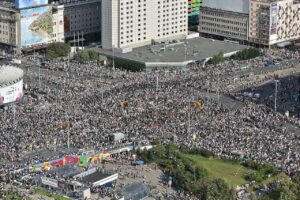
What was the context in which the uprising broke out?
From the beginning of the war, the Polish Home Army (Armia Krajowa – AK) had planned to resist the Germans by preparing a national armed uprising against the invaders. After the defeat at Stalingrad it became clear that the Soviets rather than the western allies would most likely “liberate” Poland and in February 1943, the Home Army chief General Stefan Rowecki amended the plan. There were to be three stages of the Uprising, beginning with an armed uprising in the east to aid the Red Army, followed by an armed struggle between the Curzon Line and the Vistula River, and finally a national uprising throughout all of Poland. Warsaw was not included in these plans; indeed as late as March 1944 General Bór-Komorowski excluded Warsaw from the plan in order to spare the urban population.
By the summer of 1944, however, both the political and the military situation on the eastern front had changed dramatically. Stalin had broken off relations with the Poles and it became clear that he intended to take control of Poland. The Red Army was rapidly advancing and many in the AK leadership felt that Poland had to make a dramatic political statement not only to show their stance against the Germans but also to make a political gesture towards the Soviets to indicate that the Poles desired a free state after the war. In the second half of July, Bór decided that an Uprising in the capital might be the only chance to allow Poles to regain a semblance of independence after the war.
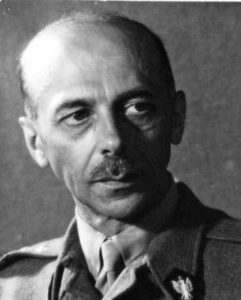
Why did the AK decide to proceed and how did they prepare for action?
A number of events took place. First, the dangerous notion that the German army was about to collapse took hold. For weeks, Warsawians had watched as German troops had trudged through the city, fleeing before the Red Army. The failed attempt to assassinate Hitler on 20 July 1944 had further bolstered the Polish view that the Third Reich was about to implode. But it was the third event, the appointment of Walter Model on 28 June 1944 as commander of Army Group Center and his counter-offensive on the outskirts of Warsaw, which would seal the fate of the city.
Why this event was so important?
Walter Model was one of Hitler’s ablest generals and was moved to head Army Group Center after Hitler began to realize the scale of the destruction wrought by the Bagration offensive. Model gathered a formidable force and it smashed into the Red Army at Radzymin and Wołomin just to the east of Warsaw. It was the largest tank battle fought on Polish soil during the war and saw the Germans crush the Soviet 3rd Tank Corps, causing a temporary setback for the Red Army. However, the AK waiting in Warsaw mistook the sounds of battle for a Soviet triumph. With no direct contact with the Soviets, they had to guess at what was happening and they miscalculated. When the AK’s Warsaw commander Colonel Monter rushed into the final meeting of the AK high command before the uprising on 31 July with the incorrect information that the Soviets ‘are in Praga’, so the part of Warsaw situated on the right bank of Vistula, urging that to delay would be a disaster General Bór did not wait for verification. Bór gave the order to begin the uprising at 5 pm on 1 August, with terrible consequences for Warsaw.
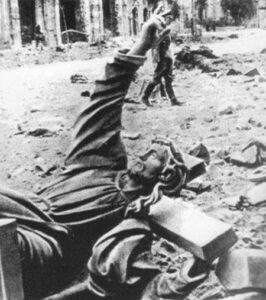
What was the first day of the uprising like both for the military and for the civilians?
The first days of the Uprising were a time of great optimism for the majority of Warsawians. The AK had failed to take key targets such as airports, bridges and main roads, however, by the end of the third day the Poles had taken over vast areas of Warsaw including a large part of Żoliborz, most of the Old Town, the southern part of Śródmieście, a large section of Wola and other areas giving the combatants and civilians a false sense of victory. Civilians poured out of their houses and apartment blocks and began to build barricades.
The atmosphere was electric. After five years of brutal occupation those in the liberated areas could move about freely without curfew and they met in the streets and hugged and sang the national anthem and savored their freedom. Swastikas were ripped from buildings and pictures of Hitler put on the barricades as targets. When the Polish flag was hoisted on the Prudential building, the tallest structure in Warsaw, people came to look at it and wept. General Bór wrote to London that the civilians were cooperating in every way and all were obedient and dedicated. The vast majority of fighters and civilians alike were convinced that the Soviets would soon be in the city and that the Germans were finished. Sadly, the euphoria would not last long, as the Germans returned to crush the city, district by district.
The AK capitulated after two months. Why did the uprising fail? Was there even the slightest chance of success?
The Warsaw Uprising failed largely due to the decisions taken by others, in particular Hitler and Stalin. The Uprising was expected to last a few days. The Poles believed that, with the ”inevitable” approach of the Red Army, the Germans would leave the city. Hitler despised Warsaw, and far from abandoning it he declared it a “Fortress City” to be defended to the last man. Hitler and Himmler devised the “Order for Warsaw” calling for the mass murder of all its inhabitants to be followed by its complete destruction. Hitler unleashed some of the most brutal units of the SS against the civilians and attacked with tanks artillery and planes. On 5-6 August alone, 40,000 civilians were murdered in the district of Wola and by the end over 150,000 civilians and 20,000 Home Army fighters lost their lives. The remaining civilian population was forced to leave their homes to be “processed” through Durchlager Pruszkow after which many were sent to Auschwitz or into the Reich as slave laborers. The decision by Hitler to crush the city with such brutality was one reason the Uprising was doomed to failure, but it was also due to the lack of support from the Soviets, and to the British and American unwillingness to sufficiently pressure Stalin to help the beleaguered Poles. Stalin had no interest in helping the Polish Home Army, which he saw as a threat to his post-war political ambitions.
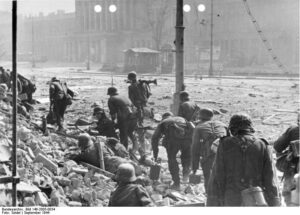
What was the immediate aftermath of the uprising in political terms and for the city itself? How did the uprising influence Warsaw and its citizens?
The immediate aftermath of the Uprising was horrific. Those who had survived the Uprising were forced out of the city and processed through the Pruszków camp but there were many others, mostly Jews and wounded AK soldiers too ill to move, who remained in hiding in the city. In an act of pure vindictiveness and for absolutely no military purpose, whatsoever, Hitler ordered the destruction of Warsaw, street by street, building by building, and with the Soviets still staying put on the eastern side of the Vistula, Hitler was free to act as he wished.
The systematic plundering of Warsaw was carried out. Heinz Reinefarth who committed numerous atrocities during the Uprising, managed with his unit to steal fifty ball gowns, 102 tuxedos and sixty bedroom carpets; Otto Geibel gave Frau Himmler two violins and four accordions. The SS stole art treasures from the Belvedere Palace which had been earmarked for Hitler’s future Warsaw residence; around 60,000 paintings looted from Warsaw are still missing. Then the destruction began. Special sapper units were brought in to burn and dynamite palaces, churches, schools and museums. As they went, they flushed out many thousands of people still in hiding in the ruins. Few managed to survive until the Soviets finally rolled into the city on 17 January 1945. By then, Warsaw was little more than a smoldering ruin.
The Warsaw Uprising was one of a few uprisings of that time – like those in Prague or in Paris. Was it similar to them?
The Warsaw Uprising was a tragic episode in the terrible war. It cannot really be compared to the liberation of Paris in August 1944, as although Hitler had also ordered the city’s destruction General Dietrich von Choltitz disobeyed the order to carry this out, and German resistance melted away as the 2nd Armored Division and 4th Infantry Divisions entered the city so that Paris was taken with very little fighting. The Prague Uprising began on 5 May 1945 as a spontaneous uprising by Czech resistance fighters to liberate the city from the Germans just at the very end of the war. There were atrocities committed by both sides but German General Rudolf Toussaint’s main aim was to try to get his forces to the west so that they could surrender to the Americans rather than the Soviets. On the morning of 9 May, the Czechs signed a cease fire agreement allowing Germans soldiers to pass through Prague heading west so long as they surrendered their arms; some continued to fight and in all around 5000 people were killed. The Uprising in Prague was not of the scale or intensity of that in Warsaw although it too became important to Czech identity after the war.
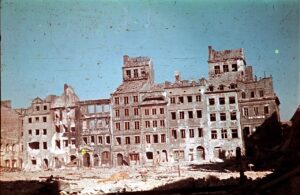
Today the uprising is an important part of Warsaw’s and Poland’s historical identity. What do you feel is the most important legacy of the uprising?
The Warsaw Uprising was tragic precisely because the scale of the destruction and death was so unnecessary. Hitler decided to declare Warsaw a ”Fortress City” and to destroy with extraordinary vindictiveness with no military justification for this. Precious men and materiel were diverted from his war to this pointless task while failures on all fronts mounted, and Stalin’s callous calculation not to aid the Uprising left a sense of great bitterness in Poland. After the war the Uprising was written out of official communist histories and former AK soldiers were persecuted. Even so, the legacy of the Uprising remained strong in national memory. Poles knew that they did not want to be ruled either from Berlin or from Moscow, but longed for freedom and self-determination. That legacy influenced the Solidarity movement of the 1980s and helped contribute to the collapse of the Soviet system and the rebuilding of Poland after 1989. Despite the many thousands of lives lost and the near complete destruction of their capital, the Warsaw Uprising remains a symbol of the sacrifices and struggles which have been made by the Poles in the name of freedom over centuries.
Interviewer: Łukasz Kożuchowski
Translation: Alicja Rose & Jessica Sirotin

